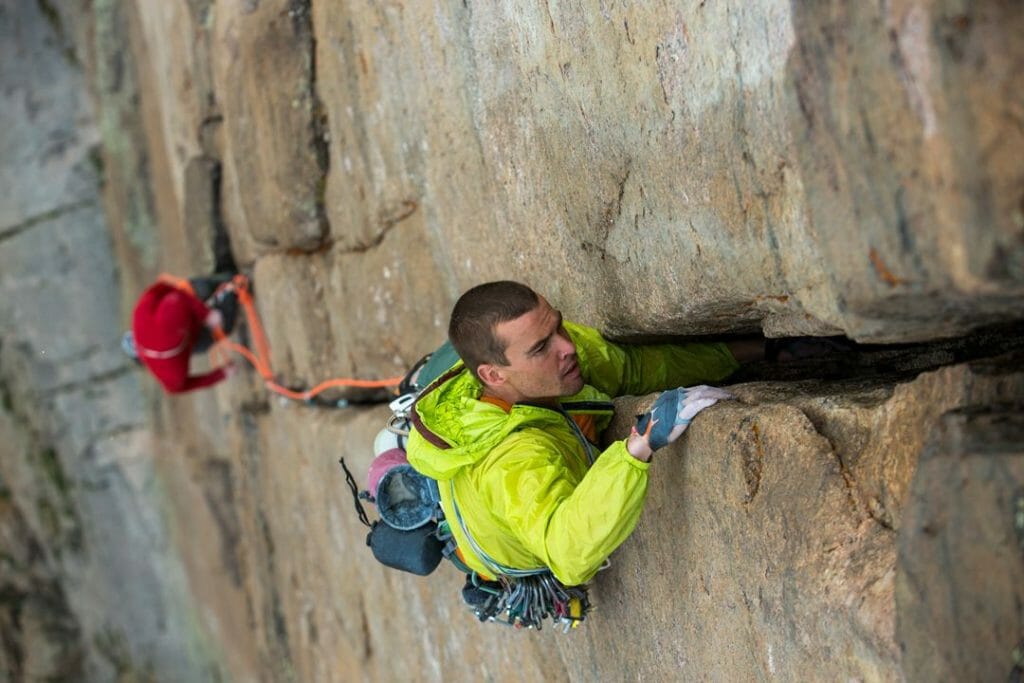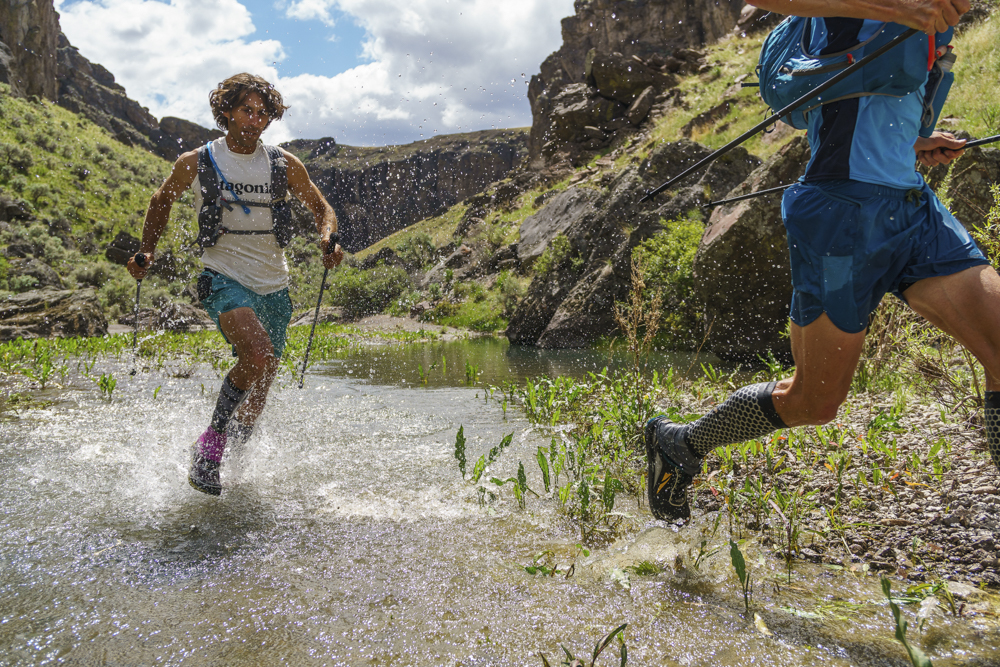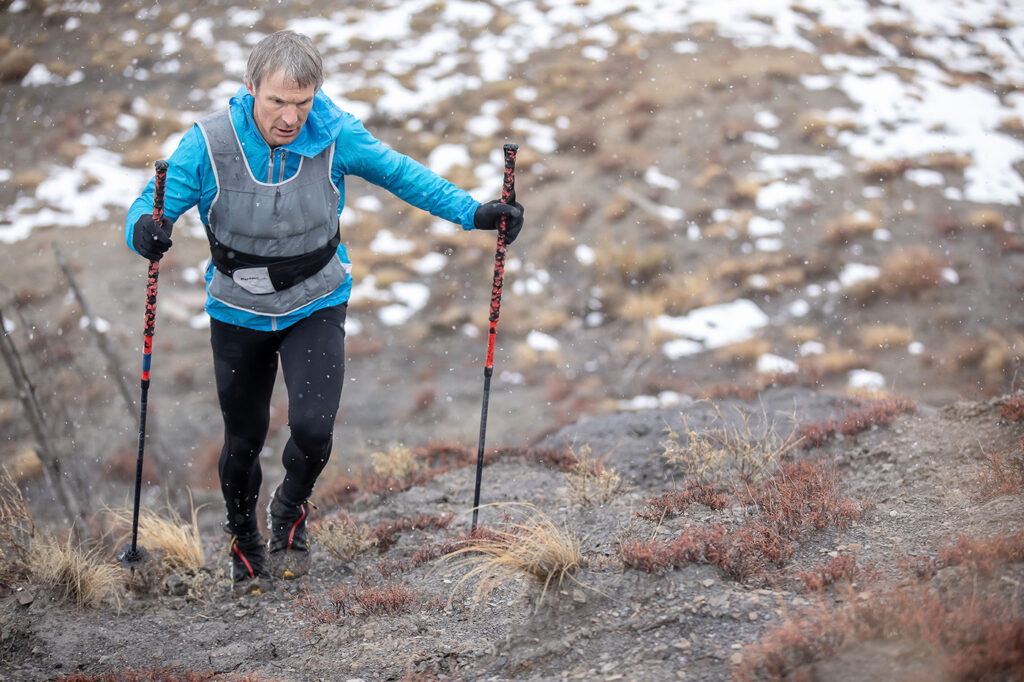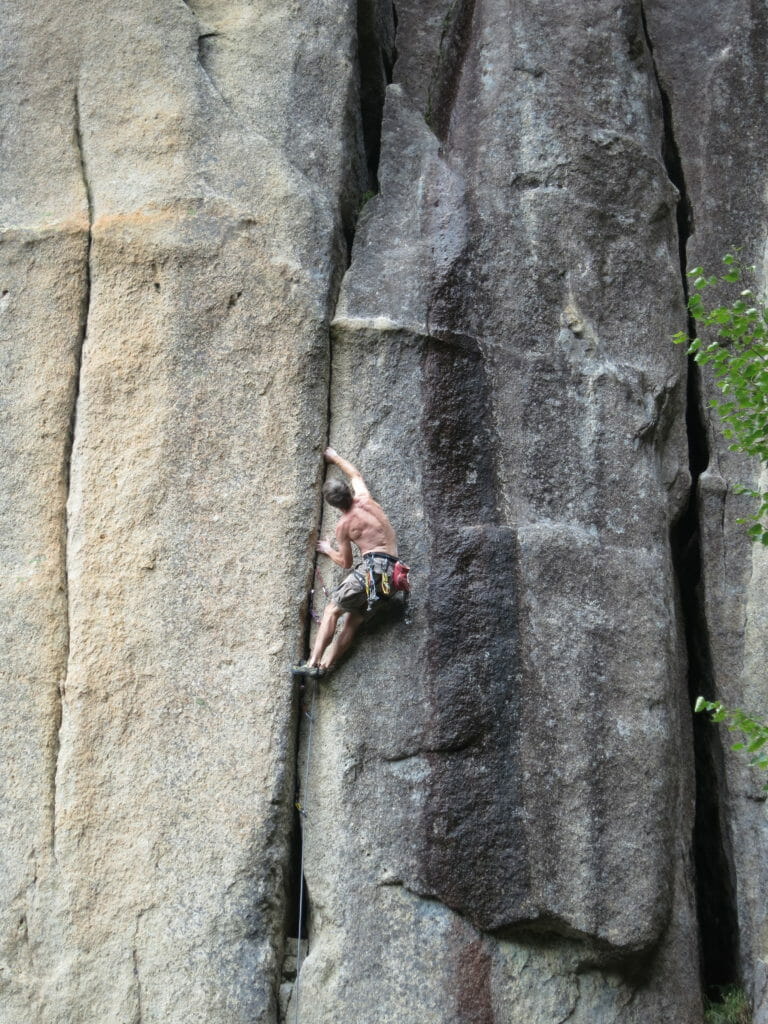At Uphill Athlete we have repeatedly stated that mountain sport athletes would be wise to learn from the training methods used in more conventional, thoroughly tested sports. A vast body of accumulated knowledge from the full spectrum if conventional sports exists. We have culled and distilled a good deal of that knowledge thereby making it more accessible and applicable to the mountain athlete. One of the key principles for endurance sports that we’ve adopted is that of Capacity and Utilization Training.
US swimming has had consistent and unparalleled international successes. This success has caused the athletic and coaching world to take notice. Bob Bowman, famous as Michael Phelps’s coach for 15 years, coined the terms Capacity Training and Utilization Training to describe two different methods of training swimmers (and by extension any endurance athlete). Here is how Bowman defines these terms:
Capacity Training
This is training that improves the long-term performance potential of the athlete. In our book Training for the New Alpinism, we refer to Capacity Training as Base Training.
Utilization Training
This is training that improves the near-term performance results of the athlete. In conventional sports, Utilization Training is comparable to what we termed Specific Training in our book.
To clarify further, Capacity Training increases the athletes capacity for work in all the realms that support your sport even though the training may not look like the event you are training for. Utilization on the other hand fully utilizes whatever capacities the athlete currently has built up in workouts the model closely the demands of the event.
Both these tools have a place in the arsenal of training methods for endurance athletes. The trick is finding the proper balance for you and your event.
Capacity and Utilization Training: Application in Other Sports
Traditional competitive sports have experimented with the balance of Capacity and Utilization Training for many years. Distance running had this debate a couple of times over past 75 years. Most recently after the US dominance of the ’70s and ’80s gave way to an era of disappointing results in the ’90s and early 2000s. The consensus among running coaches is that the drop in US performance largely coincided with a shift from a Capacity-oriented training system to one relying heavily on a Utilization approach.
Rowing also had this debate back in the ’80s after a dramatic change in the coaching philosophy in Germany, which abandoned the utilization approach in favor of one based on building capacity. This switch led to their domination of the sport.
Cross-country skiing had a similar discussion in the early 2000s, when physiologist Dr. Jan Helgarud controversially proclaimed that much of the Capacity Training that had historically been the mainstay of cross-country ski training was a waste of time. This idea was quickly disproved by the stop watch in the ultimate crucible; the competition arena.
Around that same time swimming underwent a revolution, led by Jan Olbrecht’s book The Science of Winning. (Highly recommended for those who want to delve deeper into this material.) Bob Bowman is a self-proclaimed disciple of Olbrecht, claiming to have had his eyes opened to the distinction between what Olbrecht terms Capacity and Power (Utilization) Training. Bowman, having been largely responsible for Phelps’s 18 Olympic gold medals, has had a profound impact on the direction of US swimming training philosophy.
The value of looking at these debates, for us as (mostly noncompetitive) mountain athletes, is that each of them was settled by the ultimate test: international competition. The best athletes in the world, using competing training philosophies, have lined up at the starting lines of innumerable competitions.
The stopwatch doesn’t lie and what we see is that, across a broad range of sports, athletes who prepare by focusing on building the various capacities needed in their sport before adding in Utilization Training have better results in the long run. On the other hand, those who tend to skip over the Capacity Training and jump right to the Utilization work will often see rapid improvement and then an eventual plateau in performance. These Utilizers often become confused as to why they progressed so rapidly early on only to have met a seemingly insurmountable barrier to progress. Just doing more and harder won’t get the results they seek if any of the underlying capacities are underdeveloped.
Capacity Training
Capacity Training typically will result in a short-term sacrifice of performance in exchange for long-term potential performance gains. Building capacity is like putting money in the bank. Having a big bank account in and of itself doesn’t do you much good until you need to start withdrawing. The withdrawal happens in the Utilization Training and the event itself. The bigger the capacity bank account the more withdrawals that can be made before the bank starts sending you overdraft notices.
Capacity Training takes a relatively long time to develop. It is typically less sport specific and more general in nature. It is like improving the body’s infrastructure. It’s analogous to building the Interstate Highway System: tedious and dull during the construction process but once completed it allows much more traffic to flow and flow more quickly (more physical work to be done more quickly).
Bowman uses the analogy of a cup. Capacity Training increases the size of the athlete’s cup. Increasing the capacity of each of the sport’s individual requirements ultimately allows the athletically mature person to do more, and more effective, Utilization Training. Core strength, aerobic capacity, leg and hip strength and power—these are examples of different “cups.” If any one of these cups is too small, that capacity limitation will inhibit your ultimate utilization, where you bring together all the needed qualities.

Utilization training for the rock or ice and mixed climber may include long demanding bouldering or lead climbing sessions.
Utilization Training
Utilization Training will maximally utilize whatever capacities an athlete has at that time, making maximum use of the body’s infrastructure. Extending the Interstate Highway analogy: It dumps a lot of fast-moving traffic on to the existing highway system. If the roads can handle the traffic, then a lot of work can be done. But if there is a section of the road still under construction, that bottleneck is going to be the limiter.
Utilization Training is short term and quick acting. It is very sport specific. It is usually of the same intensity as the event being trained for. This training is designed to utilize whatever size of capacity cup the athlete has brought into the Utilization phase. Here’s how it looks by system:
- Aerobic: Utilization Training increases the fraction, as well as the duration, of the maximum aerobic power that the athlete can sustain. Often called aerobic power training.
- Anaerobic: Utilization Training increases the fraction of the anaerobic capacity that can be used when you’re trying hard. This is called anaerobic endurance.
- Power: Increases the rate at which the athlete can generate the maximal force or strength.
- Technique: Increases the athlete’s speed and economy.
- Gains made through utilization training are dynamic and volatile (read: short-lived).
- The amount of Utilization Training an athlete needs depends on the size of the capacity cup he or she has developed up to that point.
- Cannot be expected to have much positive effect if the athlete’s capacity is small. If the cup is small, there is not much need for this sort of training. The athlete can’t handle it and bigger gains will come from increasing the athlete’s deficient capacities.
- Athletes with a large capacity (a BIG cup) can, and must, do much more Utilization Training for the best effect.
- Utilization Training reduces the athlete’s capacity, and this effect must be offset with Capacity Training during some part(s) of the training cycle. If you wish to progress long term, though, after a prolonged period of Utilization you’ll need to return to a Base- or Capacity-building period in which you analyze your relative strengths and weaknesses. How long? Like most everything else … it depends. It depends upon how much capacity you have built up. Very high-level athletes do much more Utilization Training. They do this because they already have incredibly high capacities for all the various forms of work required of their sport.

Utilization training is sport-specific.
Identifying Fundamental Qualities of Your Event for Targeted Capacity Training
This is an important first step in helping you decide the types of training you are going to undertake. We normally suggest that you target each of these qualities in a separate training session. That will insure that the maximum capacity gains are made in each quality.
Aerobic Capacity
This is the ability to produce high levels of energy using the aerobic metabolic pathway and is the most important quality for all endurance sports lasting more than 2 minutes. The longer the duration of your event the more important will be the development of the aerobic capacity in the primary locomotive muscles. For most of the sports we deal with this training will involve a high volume of foot borne low to moderate intensity exercise, preferably done in as sport specific modality as possible. In rock or ice and mixed climbing this type of training will be of shorter duration and focus on the shoulders, forearms and core. But it still plays a significant role in rock or ice and mixed climbing.
Anaerobic Capacity/Power
This is the ability to perform very intense exercise for between 30 seconds and 2 minutes. Needless to say this quality is of minimal interest to mountaineers and mountain runners who’s events last many hours. It can play an important part of the training of rock and ice and mixed climbers, skimo racers and VK runners. It is trained using repeated short bouts of exhaustive exercise in a sport specific mode.
Strength Capacity
This is the ability to develop high forces in the working muscles. It can take the form of very general exercises used to condition the less athletically mature and improve the resistance to injury of all athletes. Examples would be: deadlift or squat, pull ups and push upsIt can also be used in a more specific way by replicating closely some of the movements involved in the event but doing them with a high resistance. Examples would be: box step ups with heavy pack or bar bell for the mountaineer. Bulgarian Split Squats for the mountain runner. Hangboard for rock climbers. Ice axe hangs for ice and mixed climbers.
Power Capacity
This layers on top of strength because ultimately every athlete will preform better if they can generate high forces faster. Power training is done with relatively low resistance and high speed of movement. Hill Sprints are a good example that can be used for a wide variety of mountain athletes. Campus board is power training for rock, or ice and mixed climbing.
Technical Capacity
Improving technical mastery will improve your movement economy. It will cost you less energy to climb harder, run faster, move quicker over rough alpine terrain or skin up hill easier. This is skill development and the only way to master technique is through thousands of repetitions done perfectly. If you practice these skills poorly all that happens is that you get really good doing them wrong. Seek guidance from a good coach. It will be a big time saver.

Steve House on a weighted uphill hike.
Bringing Together the Fundamental Qualities for Utilization Workouts
In these training sessions you will begin to model the demands of the event in very specific ways. These sessions will usually combine several of the above mentioned fundamental qualities.
Examples of this would be:
- Very heavy weighted, steep uphill hikes for the mountaineer
- High intensity uphill interval sessions for the mountain runner, ski mountaineer and skimo racer.
- Long demanding bouldering or lead climbing sessions for the rock or ice and mixed climber.
Capacity at Work: A Real-Life Example
As an example, Alex Megos, the German sport climber and boulderer, posted this on his Facebook page on 11/28/15:
What he’s describing is that two years ago he didn’t have the capacity to make the moves. Wasn’t even close from the sounds of it. Then, two years later, he did have the capacity, and he utilized it to climb a 5.15a second try. As an aside I think it’s also instructive to note that when he checked out the route to the third bolt, he realized he didn’t have the capacity, and presumably he moved on to another route. He didn’t waste what capacity he had at the time on something he couldn’t do.
Smart athletes understand the bank account analogy. Working a route that is way above you physical ability is not only psychologically hard, but you’re at risk of overdrawing your account: i.e., getting injured.
Conclusion
It’s clear that Capacity Training and Utilization Training both have a place, and are interdependent. But for all but the elite athlete, Capacity Training takes both precedence and the majority of an athlete’s time. Only when the Capacity Training is done first, when the cup is made as big as it can be, do you begin to make withdrawals from the capacity bank account in the form of Utilization Training. The results of the Utilization Training, which can be astonishingly quick (a few weeks) and seductively satisfying, are wholly dependent on the amount of Capacity Training that was done beforehand. It is for these reasons that a climber interested in increasing their ability to climb well is wise to:
- Take the long view. Real capacity is built from year to year, not weekly or monthly.
- Plan a year out. To be your best athletically, you have to engage both Capacity and Utilization at the right time. Knowing how and when to do this is what makes coaching part science, part art. We go into great detail about how to do this in Training for the New Alpinism. For a rock climber, runner or an alpinist (or a swimmer), the concepts are the same.
We can, and should, look to other sports for how to train most effectively. Engaging in high-intensity, sport-specific, short-duration Utilization Training is good—but only when done after a long, consistent, progressive, gradually accumulated period of Capacity Training.

